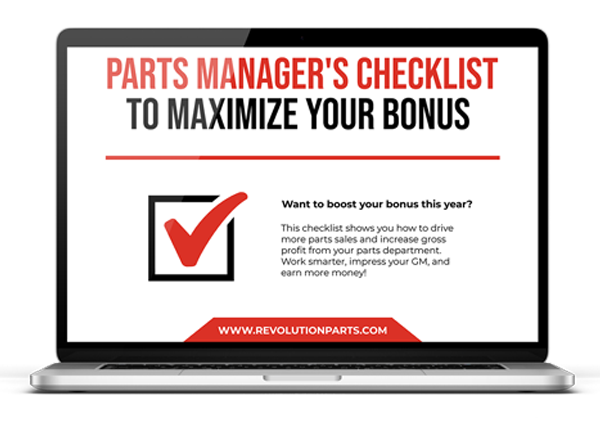Will we ever live in a return-free world? Probably not, but we can dream.
Accidentally ordering the wrong part is one of the top reasons customers request a return in the first place. Their confusion stemmed from somewhere, and it’s well within your control to make sure your website isn’t the problem—after all, they might have ordered the wrong part because of some confusion in the catalog.
Here are a few steps you can take to assure your customer that they’ve found the part they’re looking for.
A while back we talked about writing a great return policy, which can help reduce returns and save future sales. In addition to that, you can also reduce returns by ensuring your customers actually purchase the correct part when ordering.
1. Ask for the VIN multiple times.
If your solution provider offers a VIN-decoding feature, you’re in luck. Verifying a part with the customer’s VIN is an easy and efficient way to reassure shoppers that they’ve found the right part for their car.
There are several points during the purchasing process where it’s smart to ask for a VIN:
- On your homepage, let visitors search by VIN so only compatible parts show up in their search results
- At checkout, encourage shoppers to enter their VIN so you can confirm all the parts in their cart fit their vehicle
- Email people who didn’t provide a VIN and ask them for it.
Shipping auto parts can be pricy, and it’s worth a quick email to ensure you won’t be shipping in vain. Your shopper will appreciate it too!
2. Use a chat service to answer questions.
If a customer is second-guessing which part fits their car, make yourself readily available to answer questions. Contact email and phone numbers are obvious, but have you considered implementing a chat service, too?
A chat service is quick and easy. It’s less hassle than sending an email, so impatient shoppers will jump on the chance to ask a quick question before checking out. Some customers aren’t willing to wait a day or two for an email reply, so the chat feature is perfect for them.
3. Think about the most common mistakes.
Looking back on your order history. Do you notice any trends in returns? If you see that certain parts or categories are frequently returned, maybe there’s confusion in that area of your website. A quick clarification can save you a lot of future hassle.
You can also reach out to your customers. When a customer initiates a return, ask the reason for their return. If you find common trends in their responses, it should hint where you need to focus.
For example, are there parts in your catalog that don’t clarify the right versus left side? Do customers return a part because they thought it included certain components, but actually doesn’t? Make sure your parts descriptions provide all necessary information.
If a product has color-matching issues, take and upload a photo of it to your parts store.
Typically, this will provide a more accurate photo than the stock catalog image from the manufacturer (and it doesn’t have to be expensive!).
4. Make your contact info easy to find.
Whether you offer a chat service or not, you should always have basic contact information readily available to customers. They should not have to go on a scavenger hunt to find your contact email or phone number.
This goes for your shipping and return policies, too—the easier to find, the less customer frustration you’ll have to deal with later on.
At the very least, create a clearly labeled “contact” tab on your website. It’s also a good idea to provide email/phone numbers on the checkout page, so customers don’t have to navigate away and lose their progress in an attempt to contact you. Finally, create a standard email footer that provides these details.
Conclusion
Will these steps prevent all returns from happening? Probably not, but it’ll certainly help.
When a customer orders an incorrect auto part, it can reflect badly on your business. Whether you’re at fault or not, the customer will be frustrated with the hassle of returning the wrong part and reordering the right one.
Providing all necessary information and making yourself readily available to answer questions will go a long way in showing your customer that you care about their experience, and protect your business in the long run!





